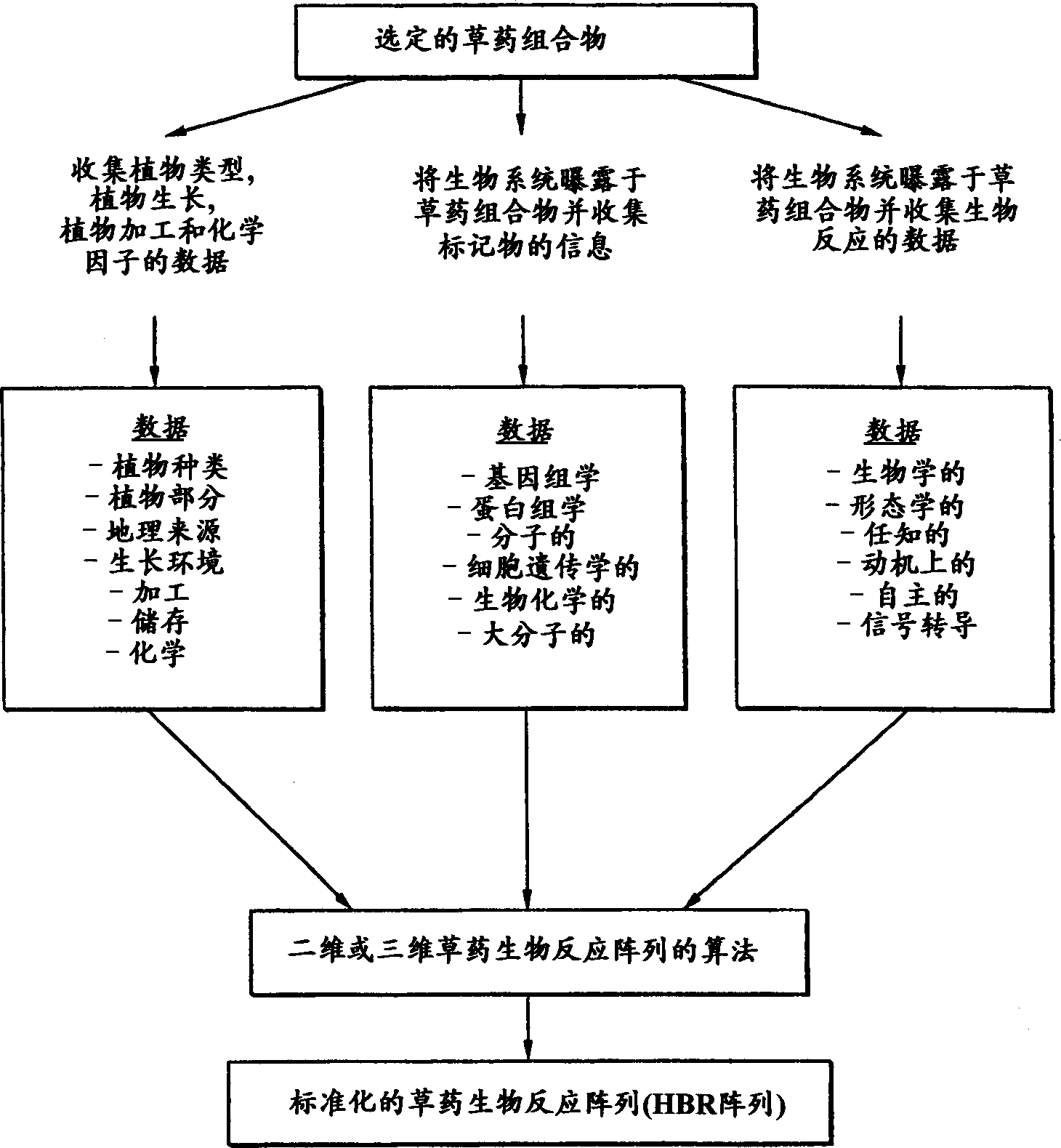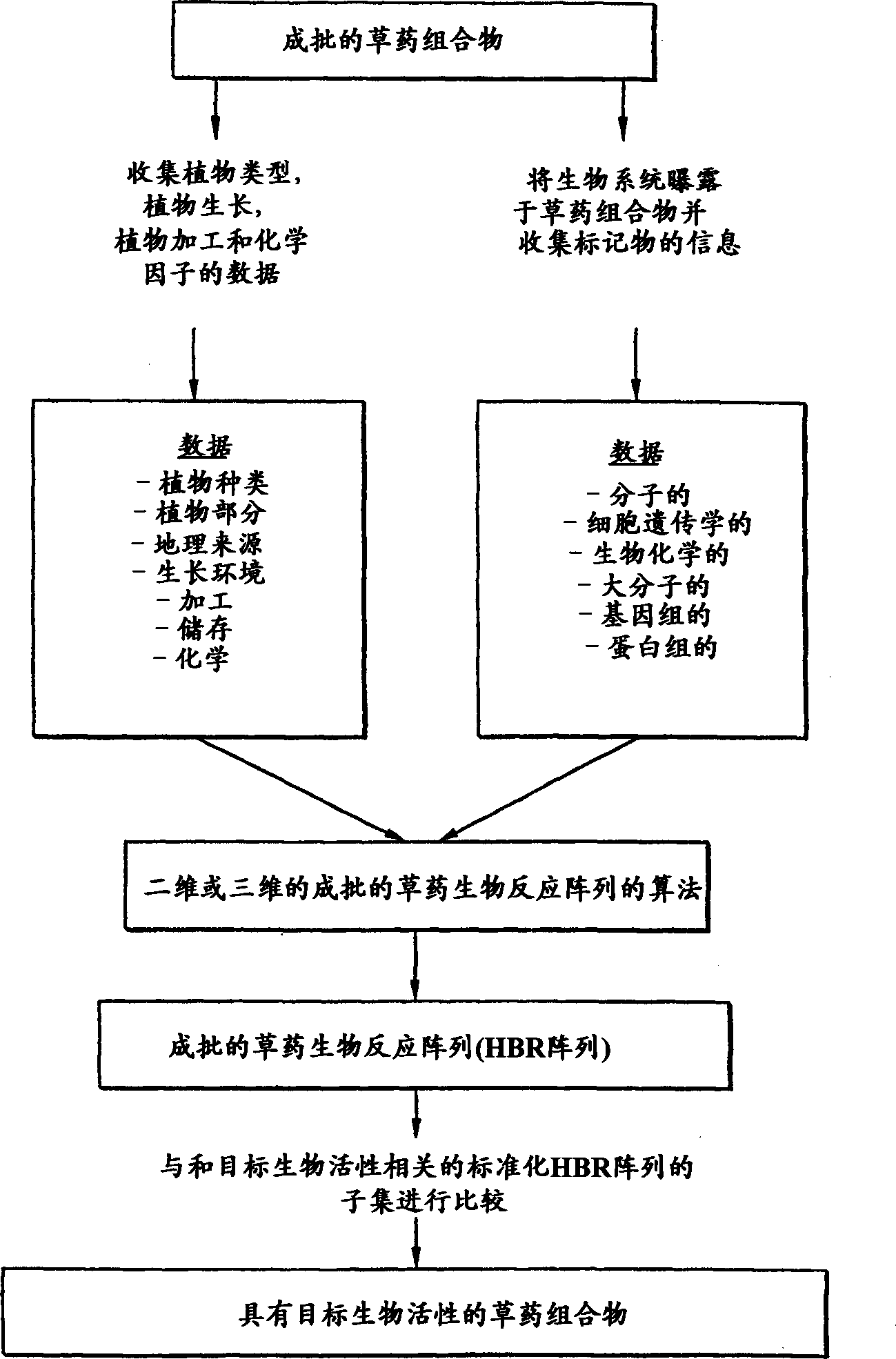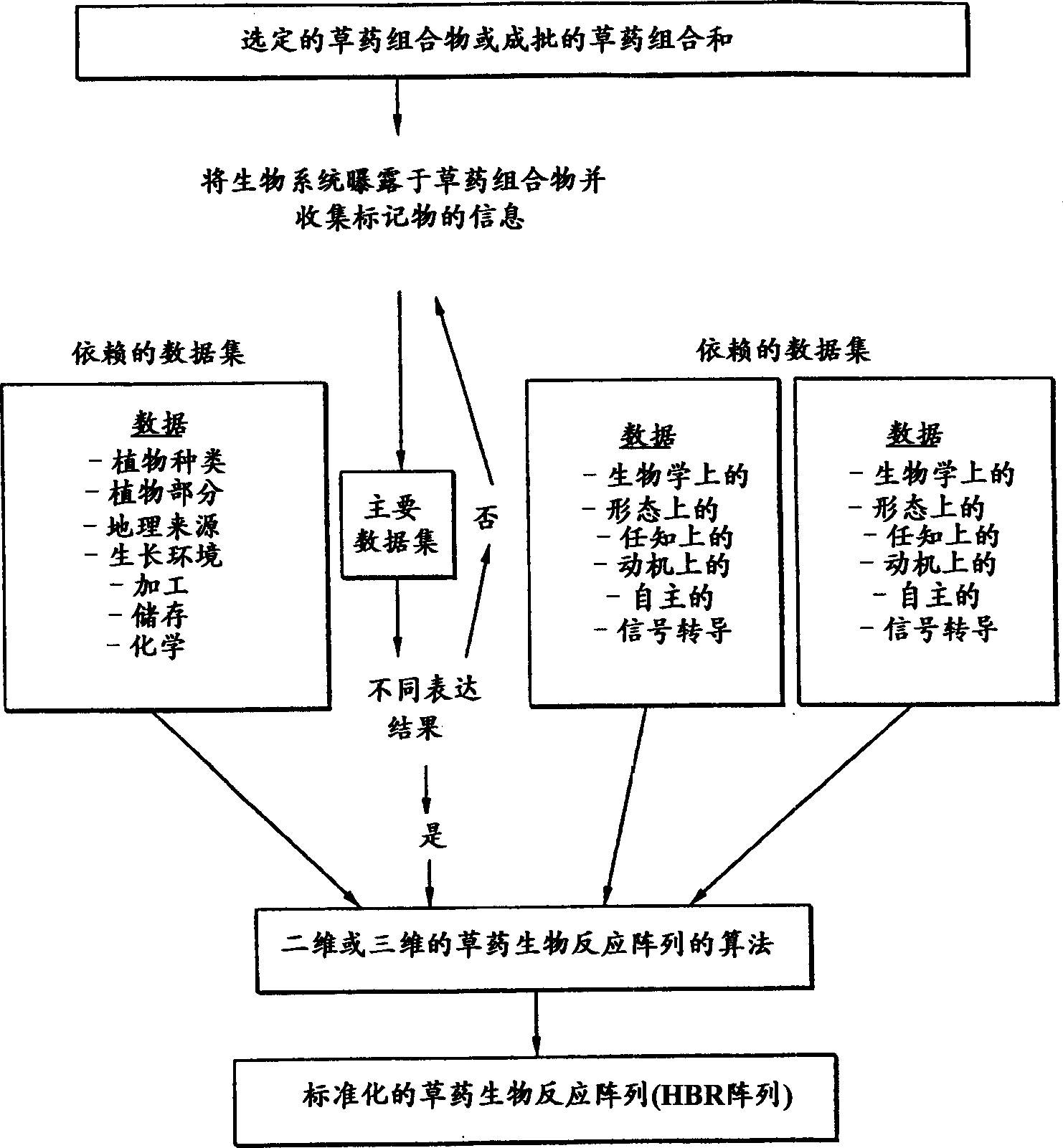Phytomics: A genomic-based approach to herbal compositions
A technology for compositions and herbal medicines, applied in the fields of biochemical equipment and methods, combinatorial chemistry, special data processing applications, etc., capable of solving problems that have not been used to explore and prove cellular and molecular reactions, etc.
- Summary
- Abstract
- Description
- Claims
- Application Information
AI Technical Summary
Problems solved by technology
Method used
Image
Examples
Embodiment 1
[0134] Example 1. Construction of a standardized HBR array of selected herbal compositions.
[0135] figure 1 A basic scheme for building a standard HBR array is provided. The definition of each component of the scheme is provided by the text above.
[0136] After the herbal composition of interest is selected, data related to various properties of the herbal composition are collected, including but not limited to plant-related properties, markers, and biological response information.
[0137] Plant-related data include, but are not limited to, the species of the plant, specific plant parts, geographic origin of the plant in the herbal composition, growing conditions of the plant, processing methods used to prepare the herbal composition, storage methods and conditions, herbal composition various chemical analyses. The marker information includes marker qualitative and quantitative data collected after application of herbal compost to a biological system. Applicable marker...
Embodiment 2
[0143] Example 2. Establishment of batch HBR arrays of batch herbal compositions
[0144] figure 2 A basic protocol for building an HBR array of batch herbal medicinal compositions is provided. The definition of each component of the diagram is provided above. The procedure for building such an array is the same as described immediately above for the normalized HBR array.
[0145] Typically, the amount of data that needs to be collected for a batch of HBR arrays will be less than the amount of data that needs to be collected for building a standardized HBR array. However, the data collected for the batch herbal composition can be added to an established HBR array or used to create a new standardized array.
[0146] Typically, data that has been collected that is highly correlated or linked to the expected biological activity of the herbal composition being tested is the best data collected for the batch herbal composition. For example, if it has been determined that a par...
Embodiment 3
[0147] Example 3. Creation and use of master data sets.
[0148] image 3 A basic protocol for building and using a master dataset of herbal compositions is provided. The definition of each component of the diagram is provided above.
[0149] The first step is to build a master dataset of selected herbal compositions or batches of herbal compositions. This can be accomplished by applying the herbal composition to the biological system and collecting the corresponding marker information which will constitute the primary data set. Typically, but not occasionally, the primary data set will include genomic and / or proteomic data in the form of arrays, such as arrays obtained with DNA chips.
[0150] In a next step, the primary data set is analyzed to see if specific expression / results have been obtained for the tested herbal composition. Specific expression / results are necessary to generate meaningful algorithms in the next step. Examples of such specific expression / results in...
PUM
 Login to View More
Login to View More Abstract
Description
Claims
Application Information
 Login to View More
Login to View More - R&D
- Intellectual Property
- Life Sciences
- Materials
- Tech Scout
- Unparalleled Data Quality
- Higher Quality Content
- 60% Fewer Hallucinations
Browse by: Latest US Patents, China's latest patents, Technical Efficacy Thesaurus, Application Domain, Technology Topic, Popular Technical Reports.
© 2025 PatSnap. All rights reserved.Legal|Privacy policy|Modern Slavery Act Transparency Statement|Sitemap|About US| Contact US: help@patsnap.com



